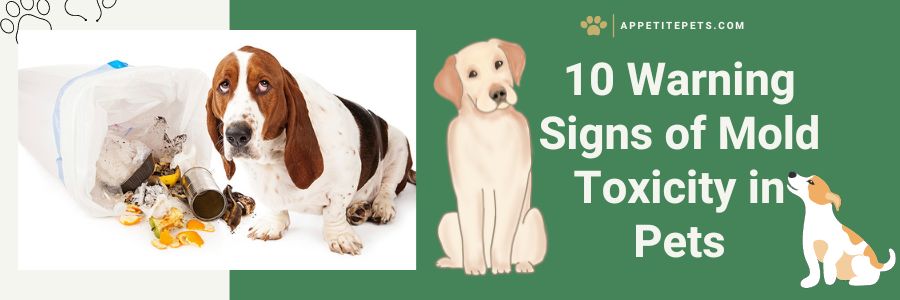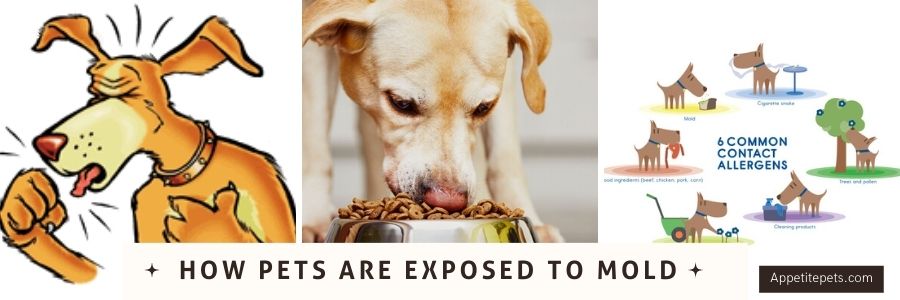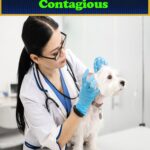10 Warning Signs of Mold Toxicity in Pets
Learn about the Warning Signs of Mold Toxicity that could indicate in your furry friend and how to keep them safe.
As pet owners, we want our beloved pets to be happy and healthy. The toxicity of mold is one risk that may have an impact on their health, though.
Pets who are exposed to mold toxicity may experience a variety of health problems, some of which may be fatal. This post will go through the 10 warning signs of mold toxicity and what you can do to safeguard your cherished pets.
What is Mold Toxicity in Pets?
A mold is a form of fungus that thrives in warm, moist locations like restrooms, basements, and places with little ventilation.
It has the ability to develop mycotoxins, which are harmful compounds that can harm both human and animal health.
10 Warning Signs of Mold Toxicity in Pets
1. Respiratory Problems
Mold-exposed pets may have respiratory issues such as choking, sneezing, wheezing, and trouble breathing.
2. Skin Irritation
Mold toxicity can also cause skin irritation in pets, including itching, rashes, and hair loss.
3. Digestive Issues
Pets who have consumed mold or mycotoxins may develop digestive problems such as vomiting, diarrhea, and loss of appetite can be warning signs of mold toxicity.
4. Neurological Symptoms
Mold toxicity can also impact pets’ nervous systems, causing seizures, tremors, and confusion.
5. Fatigue and Weakness
Mold-exposed pets may exhibit weariness, weakness, and a loss of vitality can be warning signs of mold toxicity.
6. Eye and Ear Infections
Pets that have been exposed to mold may also be more susceptible to eye and ear infections.
7. Allergies
Mold exposure can cause allergies in pets, which can manifest as sneezing, coughing, and itching.
8. Increased Thirst and Urination
Pets that have ingested mycotoxins may experience increased thirst and urination as warning signs of mold toxicity.
9: Bleeding
In severe cases, mold toxicity can cause pets to bleed internally or externally showing warning signs of mold toxicity.
10: Death
In rare cases, mold toxicity can be fatal for pets.
How Pets are Exposed to Mold
Mold can be transmitted to pets through breathing, eating, or skin contact. Mycotoxins can also be introduced to them through contaminated water or food.
How to Keep Your Pets Safe from Mold Toxicity
1: Preventing Mold Growth in Your Home
It is critical to avoid mold growth in your home in order to safeguard your dogs from mold toxicity. This can be accomplished by keeping your home clean and dry, repairing any leaks or water damage, and utilizing a dehumidifier in moist areas.
2: Keeping Your Pets’ Living Areas Clean
Cleaning your pets’ living quarters, such as their bedding and toys, on a regular basis will also help minimize mold growth and exposure.
3: Providing Clean and Safe Food and Water
Make sure your pets have clean and safe supplies of water and food to avoid swallowing mold or mycotoxins.
FAQ:
Q1. Can mold toxicity be treated in pets?
A1. Mold toxicity in animals is treatable with the intervention of a veterinarian. Medication, nutritional support, and lifestyle changes may all be used in treatment.
Q2. Can pets die from mold toxicity?
A2. Mold toxicity can be lethal to pets in rare situations. If your pet exhibits any symptoms of mold toxicity, it is critical to be aware of the warning signals and seek veterinarian assistance.
Q1. How can I tell if my pet has been exposed to mold?
A1. Respiratory problems, skin irritation, digestive troubles, neurological symptoms, exhaustion and weakness, eye and ear infections, allergies, increased thirst and urination, bleeding, and death are among the 10 warning signs of mold toxicity in pets. If you observe any of these symptoms in your pet, it is critical that you get veterinarian attention.
Q2. Can mold toxicity affect all types of pets?
A2. Mold toxicity can damage dogs, cats, birds, and small animals such as hamsters and rabbits. Certain pets, such as those with impaired immune systems or respiratory difficulties, may be more sensitive to mold toxicity than others.
Q3. Can I prevent mold toxicity in my pets?
A3. To keep your pets safe from mold toxicity, keep your home clean and dry, repair any leaks or moisture, and use a dehumidifier in moist places.
Cleaning your pets’ living areas on a regular basis, providing clean and safe food and water, and getting veterinarian care if you see any indications of mold toxicity will all help to keep them safe.
Q1. Can humans be affected by mold toxicity in pets?
A1. While it is rare for humans to be affected by mold toxicity in pets, it is possible. People with allergies or compromised immune systems may be more susceptible to mold toxicity.
It is important to seek medical attention if you notice any symptoms after exposure to a pet with mold toxicity.
Q2. Is there a specific type of mold that is more toxic to pets?
A2. Stachybotrys, Penicillium, Aspergillus, and Cladosporium are among the molds that can be toxic to pets. Toxicology severity can vary depending on the type of mold, the degree of exposure, and the wellness of the pet.
Q3. What should I do if I suspect my pet has mold toxicity?
A3.If you fear your pet has mold toxicity, you should seek veterinary care right once. Your veterinarian can run diagnostic tests, give supportive care, and make treatment recommendations.
To avoid further exposure, it is also critical to identify and eliminate the source of the mold.





